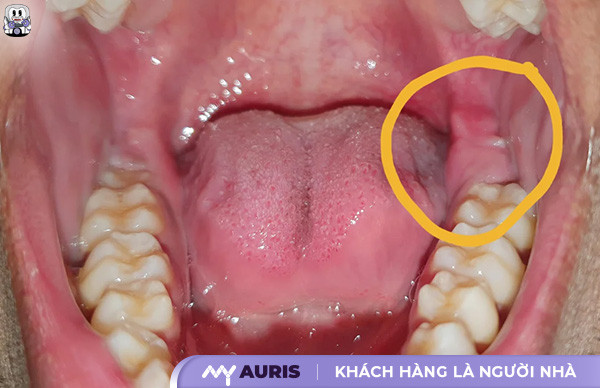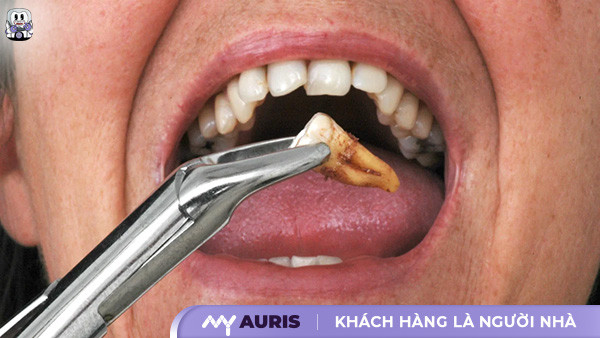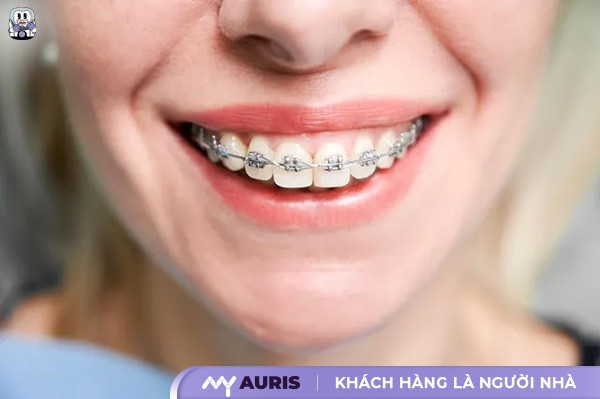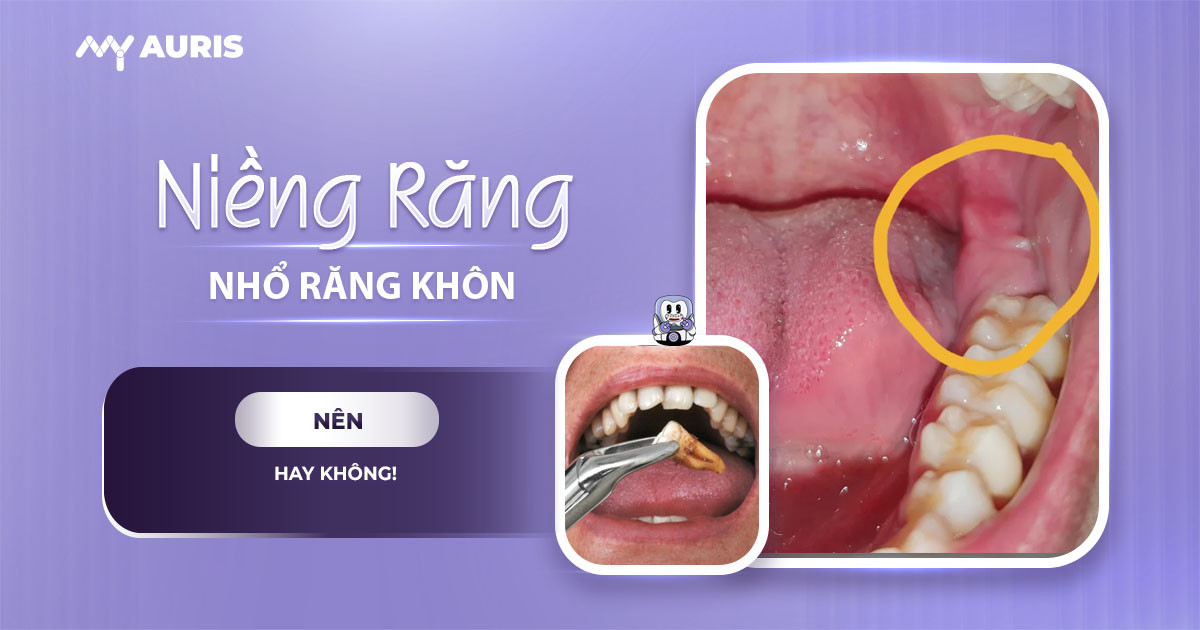The question of whether braces require wisdom tooth extraction is a common concern for many before deciding on orthodontic treatment. In reality, wisdom teeth sometimes need to be extracted to ensure a smooth and highly effective bracing process. However, many people still worry whether wisdom tooth extraction will negatively impact the final results. To better understand this issue and make an informed decision, please don’t miss the important information in the following article.
What are wisdom teeth?
Wisdom teeth, also known as the third molars, are the last teeth to emerge at the very back of the mouth. Typically, wisdom teeth begin to erupt during the transition to adulthood, roughly between the ages of 17 and 25, though this timing can vary from person to person.
A distinctive feature of wisdom teeth is that they rarely play an essential role in daily chewing. In many cases, wisdom teeth erupt crookedly, are impacted, or are crowded, causing pain, inflammation, and affecting adjacent teeth. Monitoring and evaluating the development of wisdom teeth by a specialist dentist is crucial for long-term oral health.

Is wisdom tooth extraction necessary for braces?
Wisdom teeth, also known as third molars or “tooth number 8,” typically emerge between the ages of 17 and 25 – a period that often coincides with or is close to when orthodontic treatment begins. So, is wisdom tooth extraction mandatory when getting braces? The answer depends on the position, eruption angle, and the extent of the tooth’s impact on the entire jawbone and dental structure.
Cases where impacted wisdom teeth need to be extracted before braces
One common reason dentists recommend wisdom tooth extraction before braces is due to malpositioning. Specifically, when a third molar (“tooth number 8”) erupts at a 45-90 degree angle, pushes into the cheek or an adjacent tooth, or lies horizontally within the gum, it can cause misalignment of the entire dental arch. This not only hinders the bracing process but also severely impacts the effectiveness of orthodontic treatment.
Therefore, in many treatment plans, dentists will thoroughly evaluate X-rays to determine the ideal time to remove misaligned wisdom teeth, facilitating easier tooth movement and reducing the risk of relapse after braces are removed.
Failure to address third molars (“tooth number 8”) early can lead to several dangerous wisdom tooth complications, affecting oral health and orthodontic outcomes:
- Tooth decay: Wisdom teeth often erupt close to the second molars (“tooth number 7”), creating narrow gaps that are difficult to clean. Food easily accumulates, fostering bacterial growth and leading to enamel decay and pulp cavities.
- Bad breath: The position of third molars (“tooth number 8”) often makes thorough cleaning difficult. When the gums around the tooth are swollen and painful, incomplete cleaning leads to bacterial buildup and unpleasant odors.
- Tooth misalignment: Misaligned wisdom teeth can easily push against adjacent teeth, causing the entire dental arch to shift, resulting in malocclusion and prolonging the orthodontic treatment process.

Cases where straight wisdom teeth are extracted before braces
Wisdom teeth typically appear when the jawbone has already developed stably and the basic teeth have fully erupted. Therefore, even straight-erupting wisdom teeth rarely play a significant role in chewing function.
In many orthodontic cases, especially for overbites or protruding teeth, dentists will recommend extracting wisdom teeth even if they erupt straight. This creates space for braces, allowing teeth to move into their correct positions, ensuring higher orthodontic effectiveness. Additionally, early wisdom tooth extraction helps maintain long-term bracing results, reducing the risk of teeth shifting after the braces are removed.
Cases where wisdom teeth are extracted after braces
For cases where orthodontic treatment began at a young age, after the bracing process is complete, the dentist will re-evaluate the condition of the wisdom teeth to decide whether extraction is necessary. The goal is to protect the orthodontic results and avoid the risk of misaligned wisdom teeth causing jaw shifting after braces.
In summary, whether wisdom teeth are extracted before or after braces depends on each individual’s oral characteristics. Regardless of the timing, wisdom tooth extraction during orthodontic treatment does not significantly affect chewing function, as wisdom teeth do not play an essential role in the dental arch.
However, to ensure maximum safety, you should have the procedure performed at a reputable dental clinic with highly qualified dentists and modern equipment. Don’t forget to discuss thoroughly with your orthodontist to create the most suitable and effective treatment plan.

Why should wisdom teeth be extracted before braces?
During orthodontic treatment, wisdom tooth extraction is often recommended early by orthodontists to ensure treatment effectiveness and protect oral health. Here are the important reasons:
Creating space in the dental arch for smooth tooth movement
Wisdom teeth often erupt at the very back of the dental arch, occupying significant space and lacking clear chewing function. Extracting wisdom teeth creates the necessary space for other teeth to move easily during the bracing process, thereby helping to achieve straight, beautiful teeth and a correct bite. This is a crucial step for optimal orthodontic results, reducing crowding and misalignment.
Preventing oral diseases and potential complications
Because they are located deep within the dental arch, wisdom teeth are very difficult to clean, easily accumulating plaque that can lead to tooth decay, gum inflammation, or other oral diseases. Furthermore, wisdom teeth often erupt impacted, misaligned, or push against the second molars (“tooth number 7”), causing damage to adjacent teeth and potentially harming the jaw structure.
Dentists often recommend wisdom tooth extraction not only to create space for braces but also to prevent future oral complications. This is a proactive step to ensure comprehensive oral health.
Protecting long-term bracing results
In many cases, wisdom teeth may not have erupted when treatment begins but can emerge during the bracing process. When this happens, wisdom teeth can exert pressure on other teeth, causing them to shift out of their desired positions, directly impacting the orthodontic results. Therefore, removing wisdom teeth from the outset is the best way to ensure a smooth orthodontic process and maintain stable, long-lasting results.
According to experienced dentists, wisdom tooth extraction during orthodontic treatment is a quick, safe, and virtually painless procedure, thanks to modern anesthesia technology. Therefore, you don’t need to worry too much about fear when entering the clinic. Beyond helping maintain a straight set of teeth, removing wisdom teeth also allows the dentist to easily control traction forces and position teeth correctly, thereby shortening treatment time. Moreover, wisdom tooth removal is an effective preventive measure against common wisdom tooth complications such as: tooth decay due to difficult cleaning, gum inflammation, malocclusion reducing chewing function, and even persistent bad breath.





